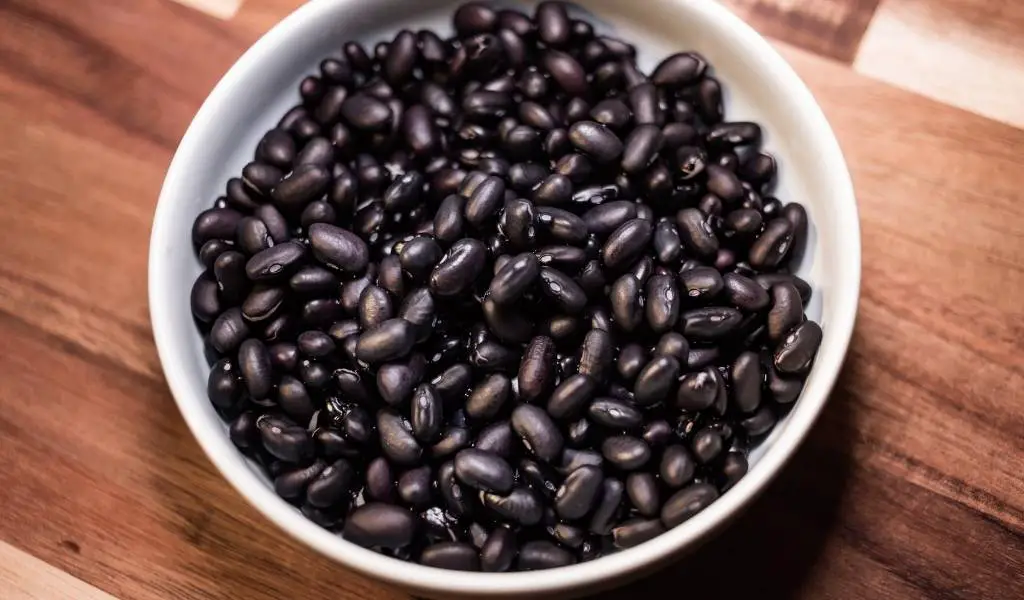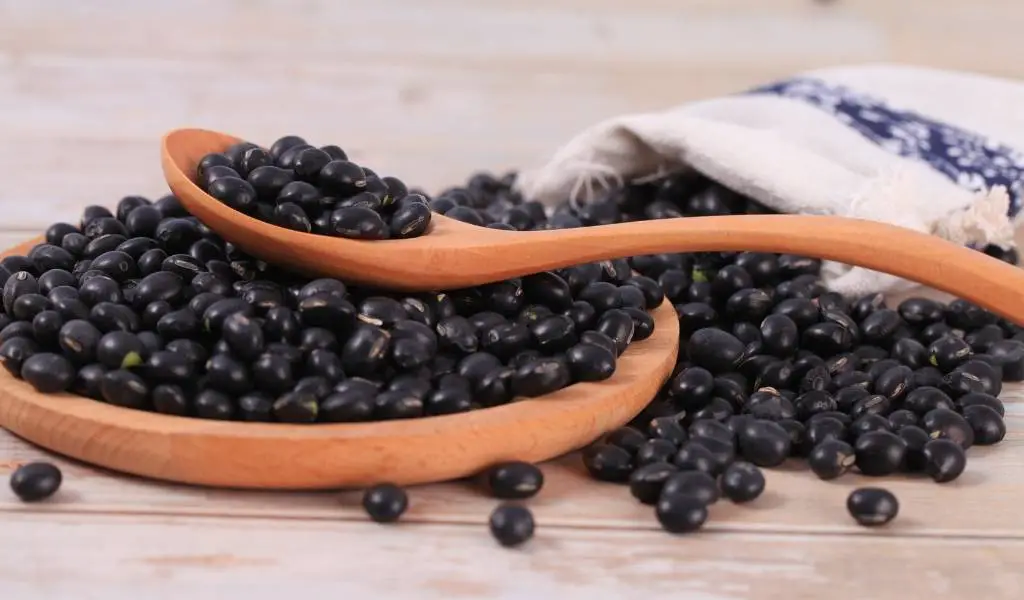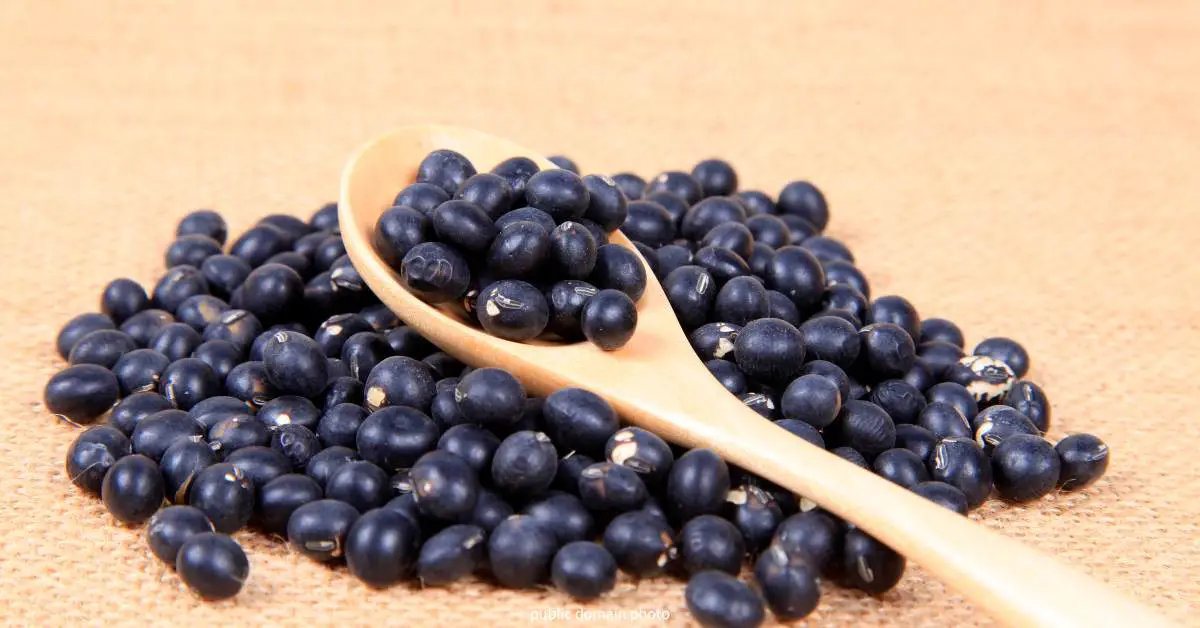Are black beans low histamine? When you’re managing histamine intolerance, mealtimes can feel like navigating a minefield.
High histamine foods like aged cheese, wine, and smoked meats are off the menu, while safe, low histamine foods are embraced as new pantry staples.
But what about family favorites like black beans? Can these nutrient-packed legumes be part of an antihistamine diet? The answer is a cautious yes—with a few preparation pointers.
No beans are totally histamine-free, as they contain histidine, an amino acid that under certain circumstances, can end up as histamine. (1) However, some varieties of beans. tend to be lower in histamine than others.
Black beans have low to moderate histamine levels compared to other beans. However, histamine levels can skyrocket if you improperly store or ferment beans
Under the wrong conditions, histidine can convert to histamine, and you end up with a bean with a higher histamine content.
Let’s look at some ways to safely add black beans to your diet.
Histamines in Dried Beans
Dried black beans are a smart choice for a low-histamine diet due to how they are handled post-harvest. Unlike foods that undergo fermentation or aging, dry beans are dried soon after picking. This quickly removes moisture and prevents the enzymes that can trigger histamine formation from becoming active.
The dried beans are then stored in low humidity conditions, where minimal histamine accumulation occurs over time. When stored properly, dried beans can be kept for long periods without developing high histamine levels. The drying process essentially pauses the beans’ histamine development and retains their naturally low-histamine state.
When you soak and cook dried beans, you are working with beans close to their original just-picked quality. For people limiting dietary histamine, dried black beans offer a safe, familiar, and low-histamine plant-based protein. Choosing properly stored dried beans is a good strategy for keeping histamine levels in check.
Histamines in Canned Black Beans
Stick to dried black beans and prepare them yourself at home. Canned beans can harbor biogenic amines, tyramine, putrescine, cadaverine, and even histamine. These biogenic amines creep into the product as beans sit in their cans during storage, out of sight but not out of mind.
Over time, decarboxylase enzymes get to work converting amino acids into amines, their levels multiplying steadily over time. When you store them at higher temperatures, it fires up these troublemakers’ productivity.
Tests of canned black beans have turned up moderate amounts of histamine, tyramine, and putrescine, ranging from undetectable up to 30 mg per kg. But histamine has clocked in as high as 50 mg/kg in some canned products – a concerning level for people with histamine intolerance. (5)

How to Enjoy Black Beans without Aggravating Histamine Intolerance
So how can you enjoy versatile black beans without suffering histamine intolerance symptoms? The key is to master bean storage, prep, and cooking to minimize additional histamine production. Here are some tips:
- Purchase dried beans instead of canned
- Store dried beans in a cool, dark place and use within 1 year
- Soak black beans overnight and discard the bean water before preparing them. This reduces anti-nutrients that reduce mineral absorption.
- Avoid storing cooked black beans in the fridge as leftovers.
- Avoid fermented bean products like tempeh. The fermentation process increases histamine.
- Combine black beans with fresh, low-histamine herbs and enjoy them with other low-histamine foods.
Black Bean Sprouts Are Low Histamine
Another approach to enjoying low-histamine black beans is to sprout them. When you sprout legumes, like black beans, it boosts their content of diamine oxidase (DAO) by 250-fold. (1) Why is this important? DAO is an enzyme that breaks down histamine in your body. (2)
So, having more DAO helps your body eliminate histamine. Sprouting also makes beans and other legumes more digestible. You can use black bean sprouts in salads, wraps, and sandwiches for more nutrients.

Key Nutrients in Black Beans
Why would you want to add black beans to your diet? They’re nutritious and inexpensive. Here are some of their key nutrients:
Protein: Black beans are a veritable protein powerhouse, making them a prized asset for vegetarians and vegans. A cup of cooked black beans bestows approximately 15 grams of plant-based protein, making it a valuable addition to a meatless diet.
Fiber: The fiber content in black beans is equally impressive. This dietary fiber promotes healthy digestion and aids in maintaining stable blood sugar levels. A cup of cooked black beans boasts around 15 grams of fiber, contributing to overall digestive well-being.
Iron: Black beans emerge as a commendable source of iron, an indispensable mineral crucial for the production of red blood cells and oxygen transport throughout the body.
Folate: Folate, also known as vitamin B9, plays a pivotal role in cell division and DNA synthesis. Black beans deliver a substantial dose of folate, furthering the cause of overall health and vitality.
Antioxidants: Black beans are rich in cell-protective antioxidants, with more antioxidants per serving than many vegetables. (4)
Also, find out whether green beans contain histamines and whether peas are high in histamine.
Histamines in Black Beans
With a few adjustments, black beans can still play a delicious supporting role in an antihistamine diet. Moderate portions, proper handling, and pairing with fresh ingredients helps keep histamine in check. so you can reap their nutritional benefits on a low-histamine diet.
Be sure to keep a food diary and monitor your symptoms, so you’ll know whether adding black beans to your diet triggers histamine intolerance symptoms for you. If you eat them in moderation, it’s unlikely that it will.
References:
- Shulpekova YO, Nechaev VM, Popova IR, Deeva TA, Kopylov AT, Malsagova KA, Kaysheva AL, Ivashkin VT. Food Intolerance: The Role of Histamine. Nutrients. 2021 Sep 15;13(9):3207. doi: 10.3390/nu13093207. PMID: 34579083; PMCID: PMC8469513. https://pubmed.ncbi.nlm.nih.gov/34579083/
- Hrubisko M, Danis R, Huorka M, Wawruch M. Histamine Intolerance-The More We Know the Less We Know. A Review. Nutrients. 2021 Jun 29;13(7):2228. doi: 10.3390/nu13072228. PMID: 34209583; PMCID: PMC8308327.
- “Black Beans Nutritional Value And Analysis – NutrientOptimiser.” https://nutrientoptimiser.com/nutritional-value-beans-black-mature-seeds-raw.
- Reverri, E.J.; Randolph, J.M.; Steinberg, F.M.; Kappagoda, C.T.; Edirisinghe, I.; Burton-Freeman, B.M. Black Beans, Fiber, and Antioxidant Capacity Pilot Study: Examination of Whole Foods vs. Functional Components on Postprandial Metabolic, Oxidative Stress, and Inflammation in Adults with Metabolic Syndrome. Nutrients 2015, 7, 6139-6154. https://doi.org/10.3390/nu7085273.
- Qu Y, Wang J, Liu Z, Wang X, Zhou H. Effect of Storage Temperature and Time on Biogenic Amines in Canned Seafood. Foods. 2022 Sep 7;11(18):2743. doi: 10.3390/foods11182743. PMID: 36140871; PMCID: PMC9497643. https://www.ncbi.nlm.nih.gov/pmc/articles/PMC9497643/

